Mike and Sandy have thought about taking a boat trip on the Mississippi, but the recent launch of a brand new river boat by Viking Cruises moved them to action, bringing friends Jesse and Pat along. This trip went from St. Louis north to St. Paul. (Mike and Sandy have previously been in New Orleans, etc., so didn't do the south part of the river.)
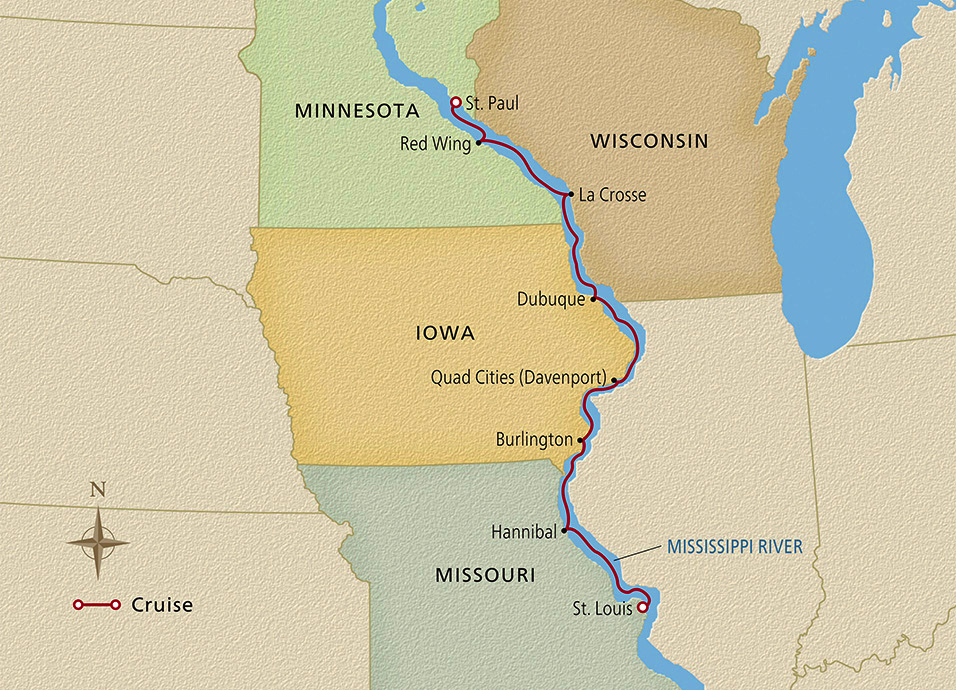
They flew to St. Louis a day early, spent the night at a nice Marriott at the airport, and then headed for the boat the next day. (The boat was actually docked in Alton, Illinois, directly across the river from St. Louis.)
The new Viking river boat is very impressive, more like a scaled-down cruise ship than the narrow river boats common in Europe. The boarding experience, conversely, was quick and easy, more like that on a small river boat than a big cruise ship.
The Viking Mississippi is really big for a river boat (368 passengers; 450 foot length), so Viking calls it a "river ship." It's by far the nicest vessel on the Mississippi.
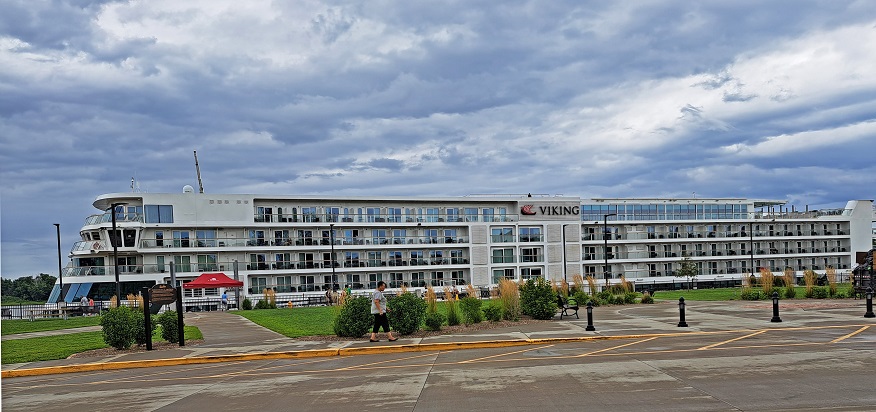
Surprising to Mike, and unlike the river around New Orleans, this part of the Mississippi had few barges and tug boats, but many little islands, pleasure boats, private houses along the shore, and a beautiful sunset our first night.
(Enlarge any picture in a new window by clicking on it -- close the new window, or click "back," to return to this page.)
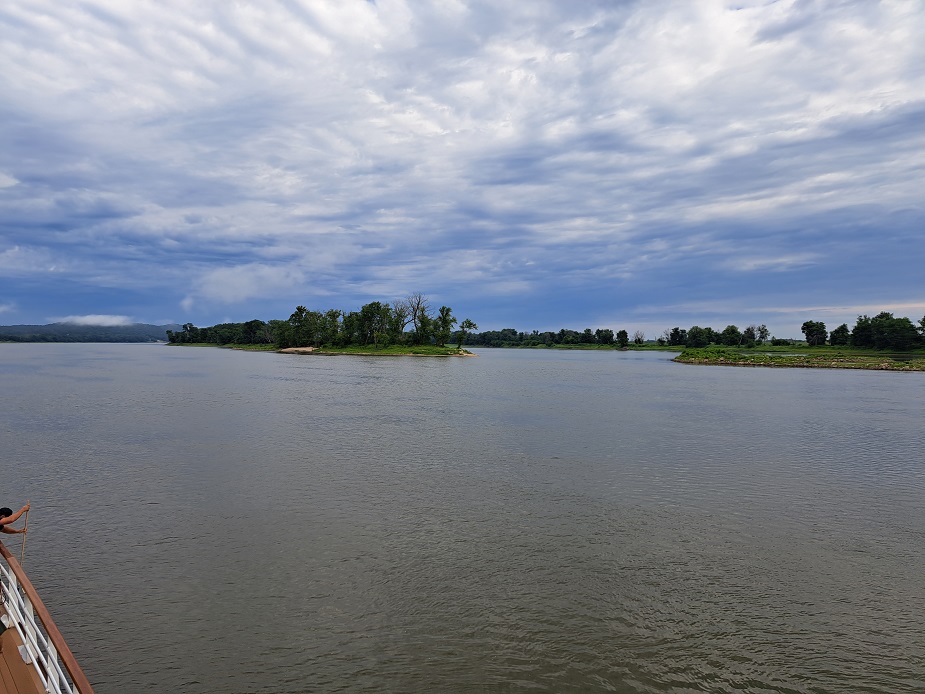
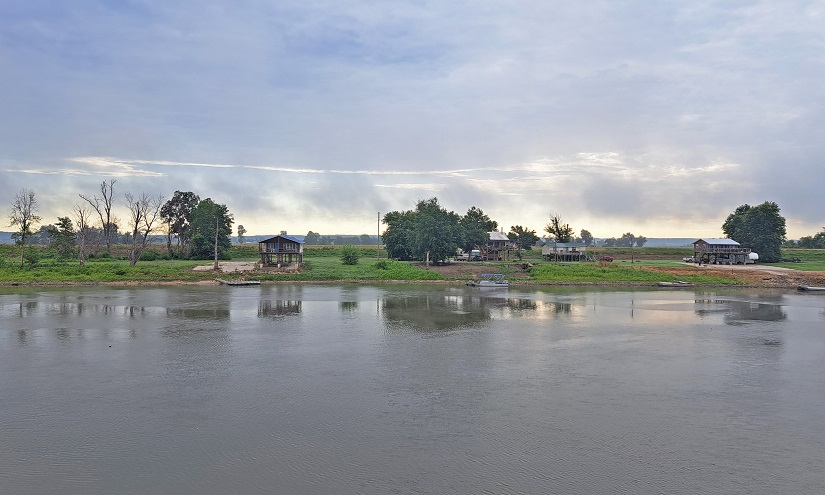

Being from Northern California, Mike and Sandy might be forgiven for thinking of big metropolitan areas and that most immigrants are from Asia or Latin America. But this trip showed them an entirely different side of the United States, namely mid-west small towns and the influence of immigrants from Northern Europe and Scandanavia.
The first port of call was Hannibal, Missouri. Hannibal is a SMALL town (here seen from our boat, and walking along Main Street), with mainly one claim-to-fame, namely Mark Twain and his "friends" Tom Sawyer, Huckleberry Finn and Becky Thatcher.
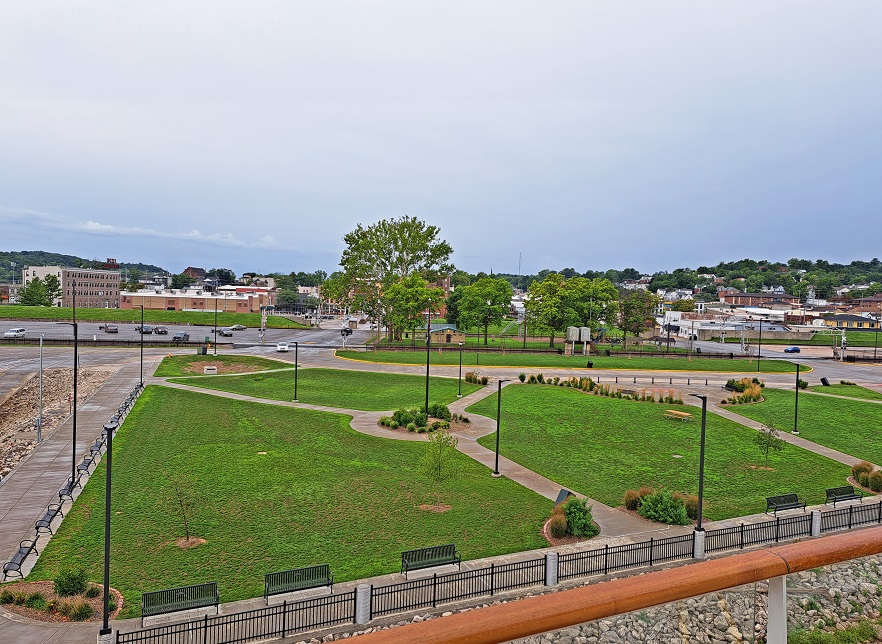
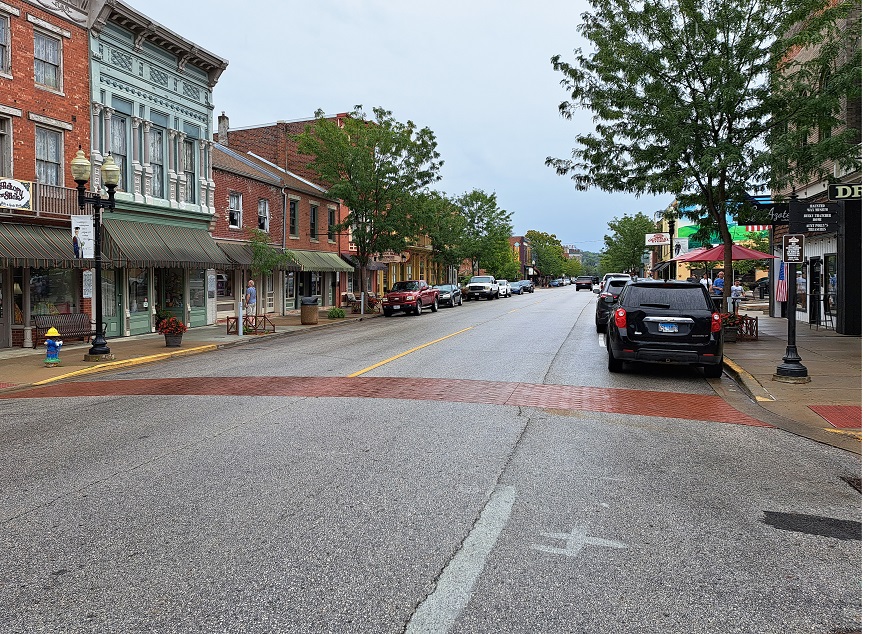
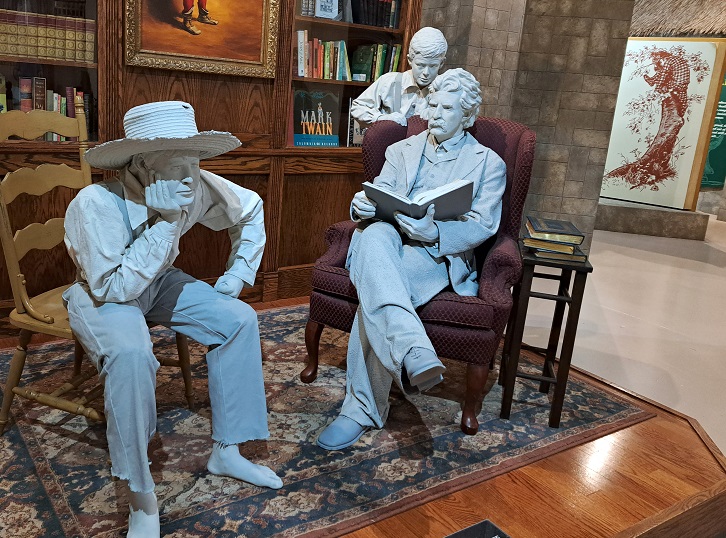
Heading up the river, we encountered one of many dams and locks on the river built not for flood control or hydro-electric power, but to improve navigation, all the way up to Minneapolis-St. Paul. Controlled releases of water compensate for periods of low natural flow. (These locks are tiny compared to the Panama Canal -- they have an average rise of 15 feet, compared to Panama's 60 feet.) Not too far past the dam was Burlingon, Iowa, an old fur trading outpost from the 1800's named after Burlington, Vermont, home of one of the first settlers. Burlington, home to many German and Swedish settlers, is still a small town, but bigger than Hannibal. One of Burlington's tourist attractions is "Snake Alley," which rivals San Francisco's Lombard Street in being the "crooked." There's a town nearby (Ft. Madison) with an abandoned Army fort that figured in the War of 1812. Not far away we saw an area of parked barges, waiting, our Captain says, for their time to start down the river.
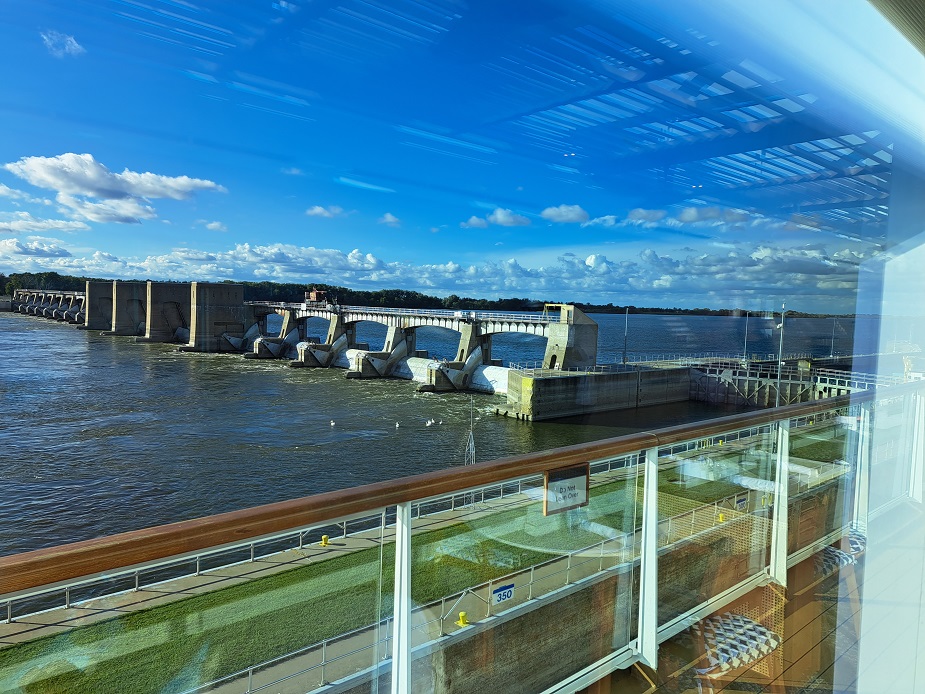
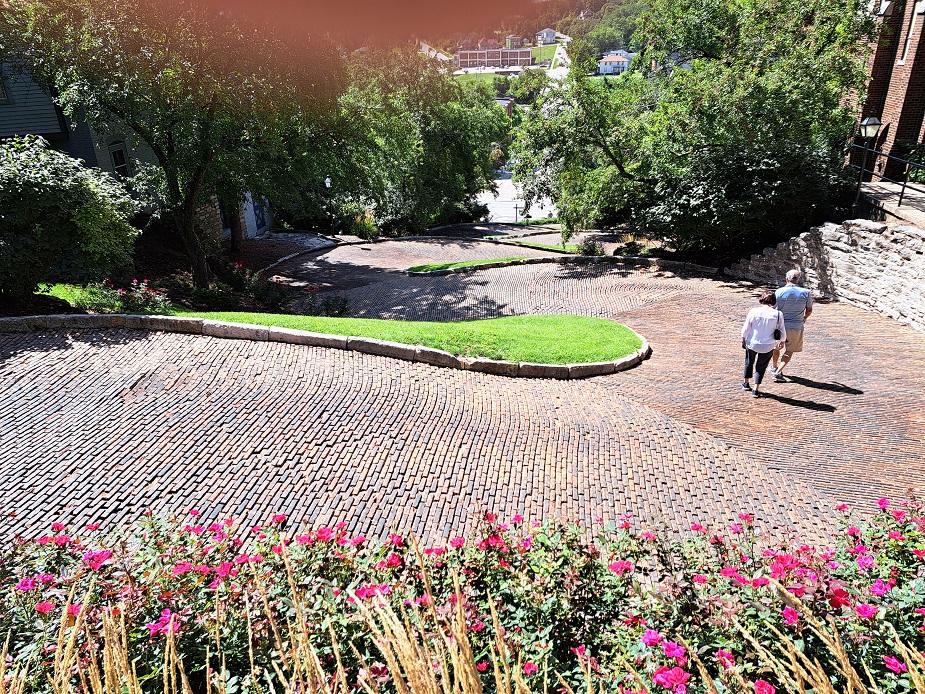
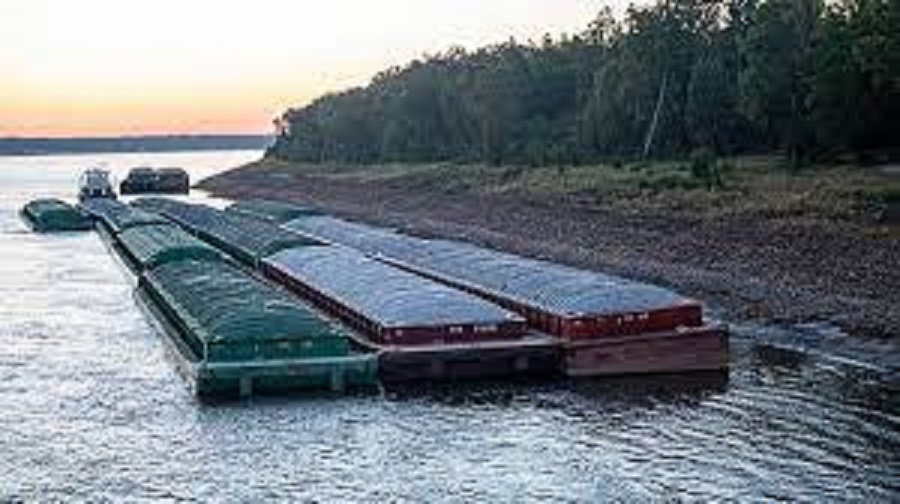
Our next stop was Davenport, Iowa, one of the "Quad Cities." Davenport may be the largest of the four, but maybe the more famous is Moline, Illinois, just across the river, where the world headquarters and several factories of John Deere Tractors, known for HUGE farming implements, is located. We saw some of the big tractors, and toured the homes of John Deere's son and his grandson-in law, both of whom were CEOs of the company at different times. (If we had thought all of the Victorian-era mansions and wealth were in big cities, we certainly saw otherwise.) This whole area, bustling with business and trade along the river, was part of the 1803 Louisiana Purchase from the French, who had quite a few settlements nearby.
(Davenport was unfortunately in the national news a few months ago, due to the surprise partial collapse of an older apartment building, since demolished.)
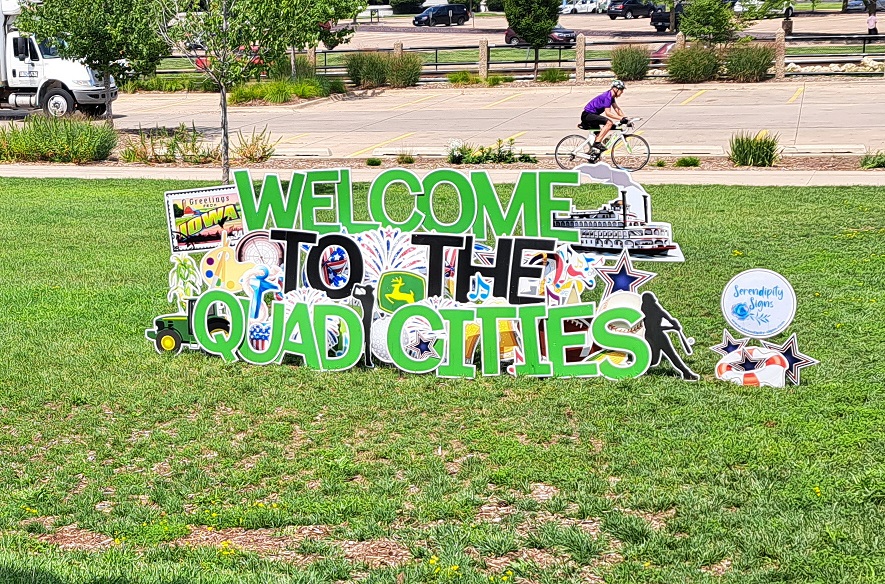
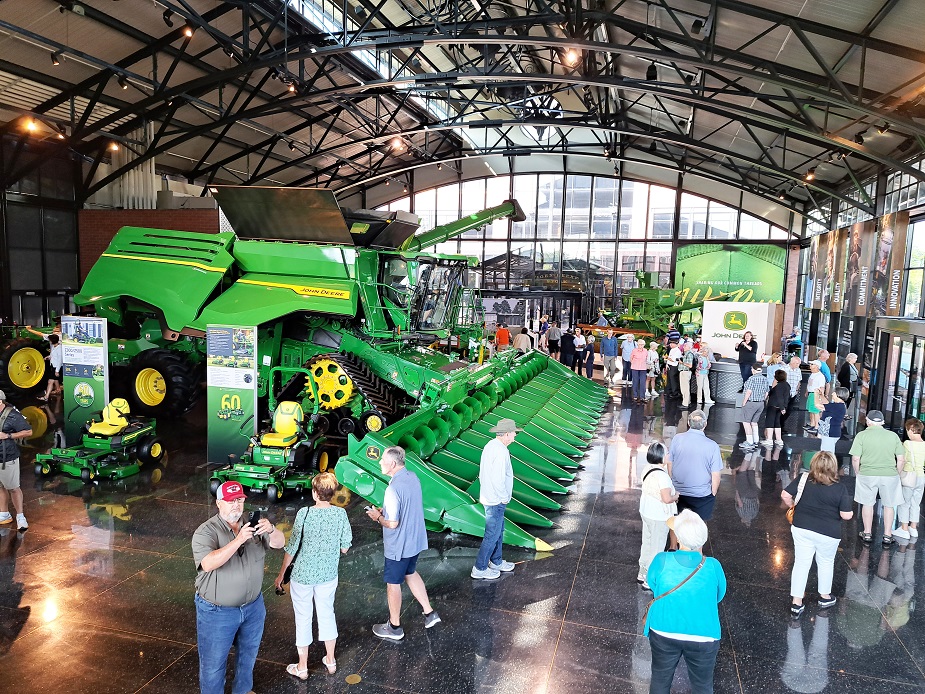
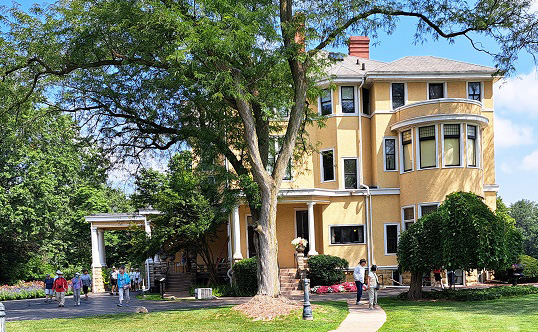
The next morning was Dubuque, our last port in Iowa, which claims to be the oldest settlement west of the Mississippi. (Another local claim to fame: the movie "Field of Dreams" was filmed in a nearby corn field.) Sandy and Mike decided to take a day off, so to speak, and made a visit to the nearby Victorian town of Galena, Illinois, which has numerous well-preserved 19th century buildings (including a home of Ulysses S. Grant, before he became President). As the saying goes, we "helped the local economy" a bit along the quaint Main Street.
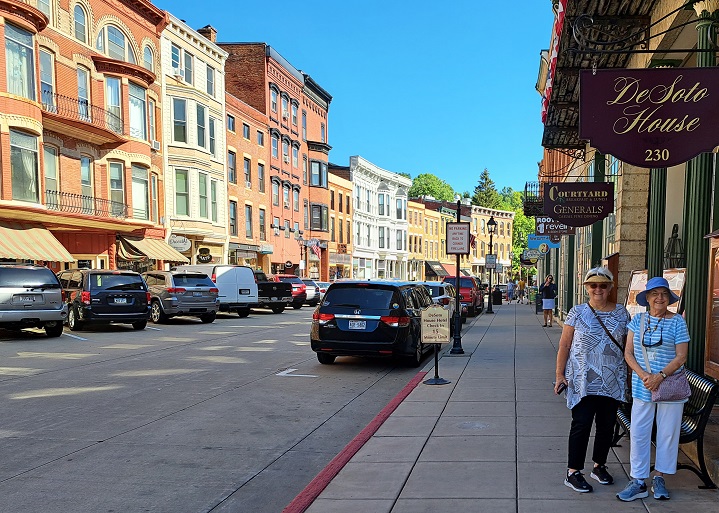
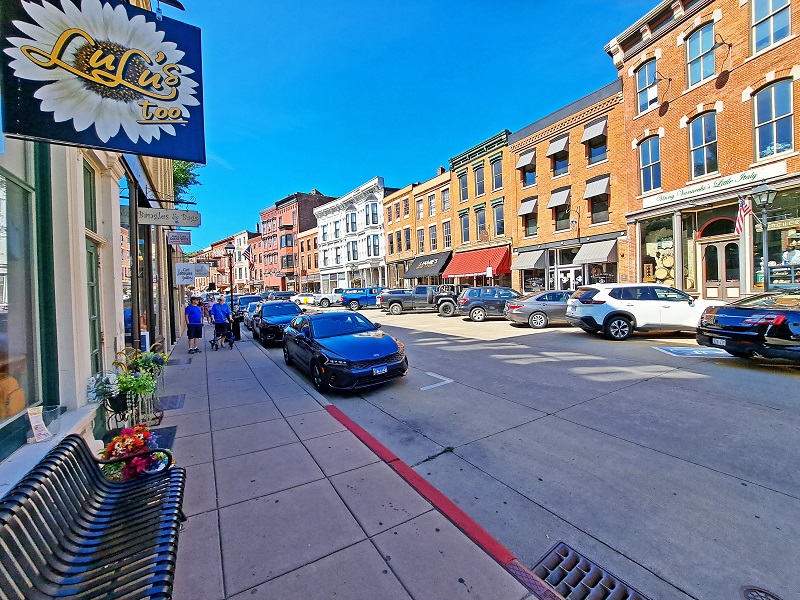
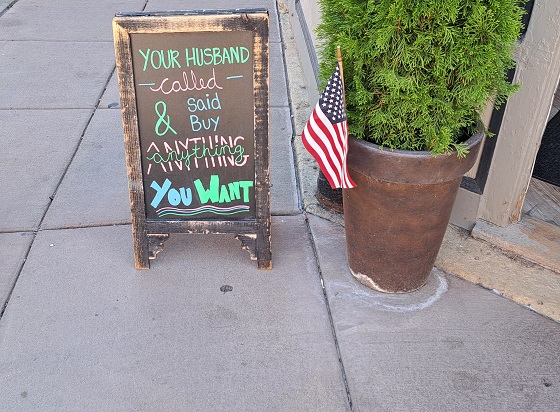
Now in Wisconsin, our ship arrived at La Crosse (locals refer to it as LAX), which at 55,000 population, is a little bigger town than other stops we've made. Two tributary rivers flow into the Mississippi at La Crosse, which is at a gap in the bluffs (aka cliffs) which line the river in this area, thus being in an ideal spot for east-west railroads. This is an area of many Norwegian immigrants, where many early settlers made fortunes in railroads or lumbering, including the Hixon family, which has seemingly donated to every cause in town (their own mansion, now owned by the historical society, is open for tours). A large local employer is the Trane Company, of air conditioning fame. From the top of the nearby bluffs, you can see three states (Wisconsin, Illinois, and Minnesota).
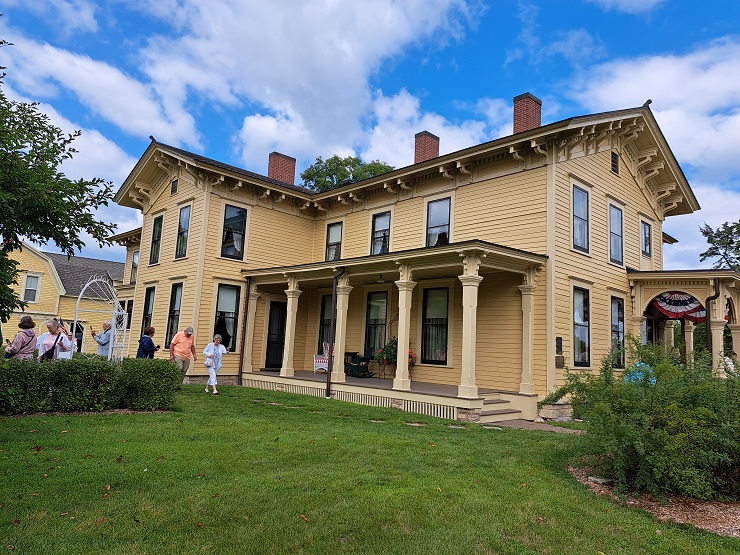
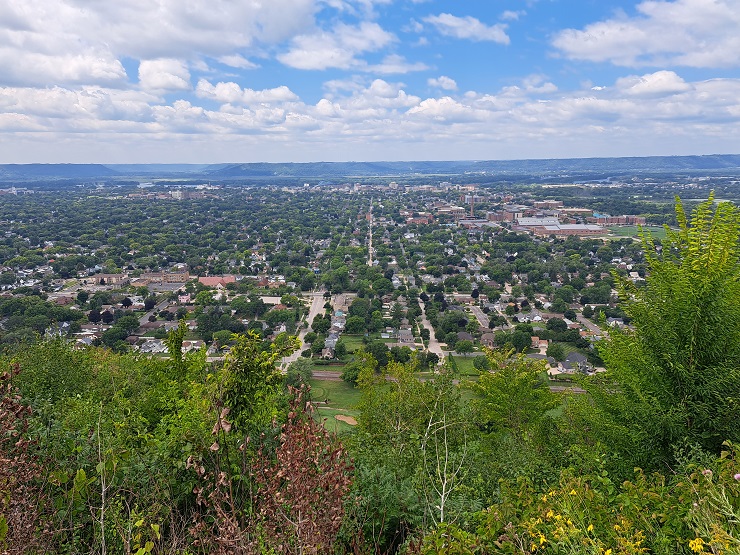
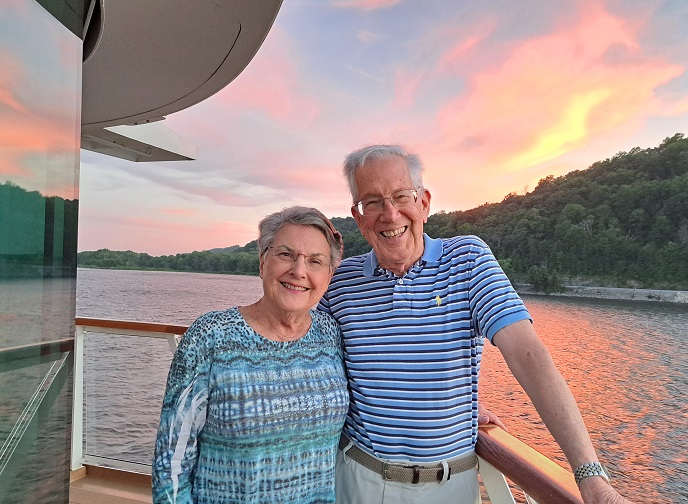
Finally we reach Minnesota, the land of small size soft drink cans. (Get it? Mini-soda?) We docked at Red Wing, center of a large corn-growing area (mostly for Ethanol), and named after a local Sioux Indian Chief. Red Wing Shoes, noted for work boots and boots for the U.S. military, is a major local employer. The influence of immigrants from Norway and Sweden is evident. Our tour was to the nearby National Eagle center, which is both an educational facility and a 'hospital' and refuge for injured bald eagles.
Now comes the dreaded packing-everything-up time on the ship!
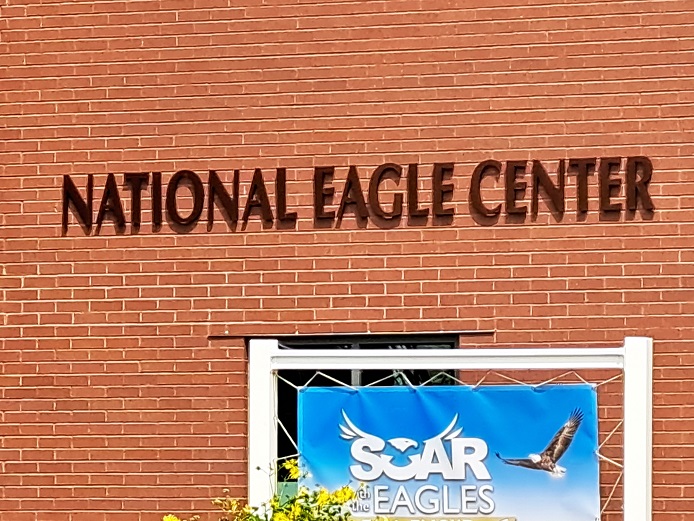
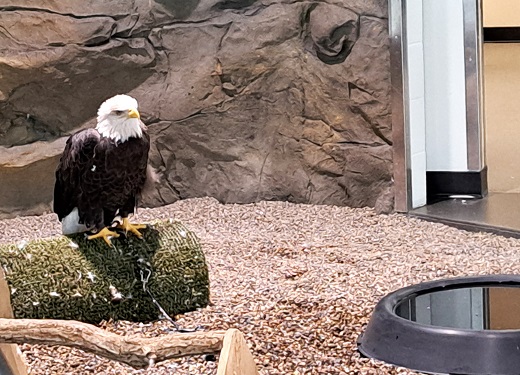

Early the next morning, we arrived at St. Paul, the end of our journey on the Mississippi River. This is half of the "twin cities," as Minneapolis is right across the river. Perhaps the greatest claim to fame here would be the headquarters of General Mills, well known in every kitchen, although the enormous Great Mall of America is nearby as well.
Our trip didn't include any sightseeing in Minneapolis, but we had to pass through there, since the airport is on that side.
A foot note about our ship's propulsion system for those interested in such things. It's something unusual for passenger vessels, although apparently popular on fire boats and tug boats. Instead of regular propellers, there are several sets of vertical blades arranged on round plates protruding down from the hull of the ship. The plate rotates, and as it does, the blades can individually change orientation. This system provides propulsion, eliminates the need for a rudder, and works instantaneously at any boat speed. It is called the Voith Schneider Propeller system, and is commercialized by a firm in Germany. (The ship's Chief Engineer said you might think of how you can twist the paddles on a canoe one way or the other as you use them. Or similarly, if a little less obvious, how the horizontal blades on a helicopter can twist one way or the other at the same time the whole assembly is rotating.)
The Home Page.